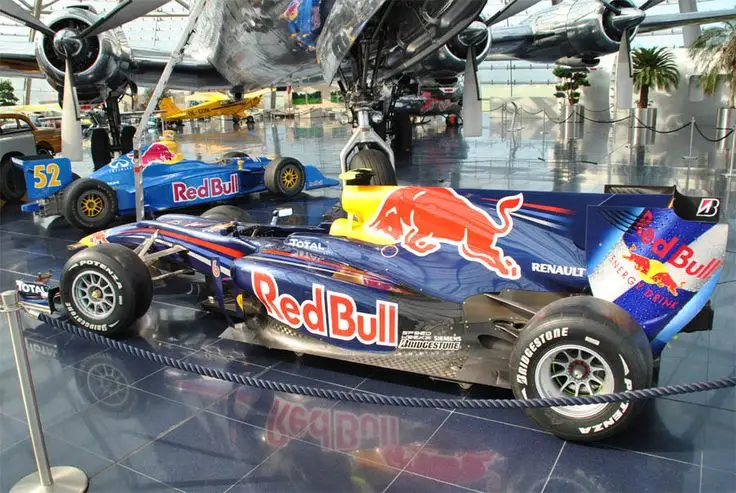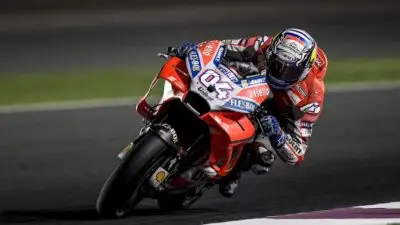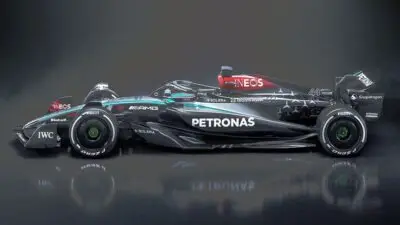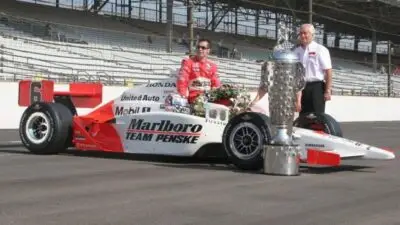Red Bull Racing transformed from an energy drink company’s ambitious experiment into one of Formula 1’s most successful teams in just two decades. Red Bull entered Formula 1 as a constructor in 2005 when they purchased the struggling Jaguar Racing team from Ford, marking the beginning of an extraordinary journey from underdogs to champions.
The team’s rise to dominance stems from a combination of engineering excellence, strategic innovation, and exceptional driver talent that allowed them to secure multiple championship titles. Within five years, Red Bull went from plucky underdogs to dominant constructor champions, achieving what many considered impossible in the highly competitive world of Formula 1.
This remarkable transformation involved key partnerships, breakthrough technical developments, and the ability to adapt to changing regulations while maintaining their competitive edge. The story reveals how a drinks company became a motorsport powerhouse through calculated risks, substantial investment, and an unwavering commitment to excellence on the track.
Key Takeaways
- Red Bull transformed from Formula 1 newcomers in 2005 to multiple championship winners through strategic engineering and talent acquisition
- The team’s success comes from combining technical innovation with exceptional drivers and adaptive strategies across different racing eras
- Red Bull’s dominance demonstrates how sustained investment and engineering excellence can overcome established competitors in motorsport
Red Bull Racing’s Path to Formula 1 Supremacy
Red Bull Racing transformed from an energy drink company’s ambitious project into Formula 1’s most dominant force through strategic investments, innovative engineering, and precise timing. The team went from plucky underdogs to dominant constructor champions within five years, establishing a blueprint for sustained success.
Early Years and Founding Vision
Red Bull GmbH entered Formula 1 in 2005 by purchasing the struggling Jaguar Racing team. The Austrian energy drink company saw motorsport as the perfect platform to showcase its brand values of performance and innovation.
Dietrich Mateschitz, Red Bull’s founder, invested heavily in building world-class facilities at Milton Keynes. The company established Red Bull Technology and recruited top engineering talent from established teams.
The early vision focused on creating a complete racing ecosystem. Red Bull developed driver academies, invested in junior categories, and built relationships with key technical partners. This long-term approach differed from many teams that focused only on immediate results.
Key Early Investments:
- State-of-the-art wind tunnel facilities
- Advanced CFD computing systems
- Comprehensive driver development programs
- Strategic partnerships with engine suppliers
The team’s initial years showed promise but lacked consistency. Red Bull Racing scored podium finishes but struggled to challenge the established powers of Ferrari, McLaren, and Mercedes.
Transformation From Underdogs to Contenders
The arrival of Adrian Newey in 2006 marked Red Bull Racing’s transformation into serious contenders. Newey brought unmatched aerodynamic expertise and innovative design concepts that revolutionized the team’s car development.
Christian Horner’s leadership as team principal created a winning culture. He balanced technical excellence with strategic decision-making, building a cohesive organization capable of sustained success.
Red Bull Racing’s partnership with Renault engines provided competitive power units during the V8 era. The combination of Newey’s aerodynamic genius and reliable engines created championship-winning packages.
Transformation Timeline:
- 2006: Adrian Newey joins as Chief Technical Officer
- 2008: First race victory at Monaco Grand Prix
- 2009: Regular podium contender with improved chassis
- 2010: First championship fight with multiple race wins
The team developed a reputation for aggressive development and innovative solutions. Red Bull Racing consistently found performance gains throughout seasons while competitors struggled to match their development pace.
Their unique approach to car setup and race strategy began distinguishing them from traditional Formula 1 teams.
Breakthrough Moments Leading to Dominance
Red Bull Racing achieved its breakthrough in 2010 when Sebastian Vettel won the drivers’ championship in a dramatic season finale. This victory established the team as Formula 1’s new powerhouse and launched an era of sustained success.
The period from 2010-2013 saw Red Bull Racing dominate Formula 1 with four consecutive constructor championships. Their technical prowess and championship titles etched their name in Formula 1 history.
Championship Success (2010-2013):
- 4 consecutive constructors’ championships
- 4 consecutive drivers’ championships (Sebastian Vettel)
- 38 race victories during the four-year period
- Multiple 1-2 finishes demonstrating car superiority
The team’s second wave of dominance began in 2021. Max Verstappen’s controversial championship victory marked the start of a new era that would surpass their previous achievements.
Red Bull achieved a 95.5 percent winning percentage in 2023, setting new records for Formula 1 dominance. This performance demonstrated their evolution from ambitious newcomers to the sport’s most successful team.
Key Drivers Shaping Red Bull’s Success
Red Bull Racing’s dominance stems from strategic driver choices that have delivered championship results. Max Verstappen’s exceptional talent has redefined the team’s potential, while strong partnerships and youth development programs ensure long-term competitive advantage.
Max Verstappen’s Impact and Record-Breaking Seasons
Max Verstappen transformed Red Bull Racing from consistent contenders into dominant champions. His arrival in 2016 marked the beginning of a new era for the team.
The Dutch driver’s aggressive driving style and exceptional racecraft quickly established him as Red Bull’s lead driver. His breakthrough came with his first race win at the 2016 Spanish Grand Prix.
Verstappen’s championship years showcase his impact:
- 2021: Won his first World Championship in a dramatic season-ending battle
- 2022: Dominated with 15 wins from 22 races
- 2023: Set records with multiple consecutive victories
His 41 wins for Red Bull Racing represent the highest individual contribution to the team’s success. The statistics demonstrate his consistency and speed across different track conditions.
Verstappen’s ability to extract maximum performance from challenging cars sets him apart. He regularly outperformed the car’s theoretical limits during Red Bull’s less competitive seasons.
The Perez Partnership and Team Dynamics
Sergio Perez joined Red Bull Racing in 2021, providing crucial support for Verstappen’s championship campaigns. His experience and racecraft complement the team’s strategic approach perfectly.
Perez excels in tire management and defensive driving. These skills prove invaluable during races when Red Bull needs to control the pace or protect track position.
The Mexican driver’s contributions extend beyond individual results:
- Strategic Support: Creates favorable race situations for Verstappen
- Consistent Points: Secures vital Constructors’ Championship points
- Experience: Brings knowledge from multiple teams and racing conditions
Their partnership functions without the internal conflicts that plagued previous driver pairings. Both drivers understand their roles within the team structure.
Perez’s racecraft shines in challenging conditions. His victories in Monaco and Singapore demonstrated his ability to win when opportunities arise.
Driver Development and Young Talent Pipeline
Red Bull’s driver development program creates a continuous supply of talented racers. The Red Bull Junior Team identifies promising drivers early in their careers.
The program spans multiple racing categories:
- Karting: Initial talent identification
- Formula 4: First single-seater experience
- Formula 3: International competition exposure
- Formula 2: Direct preparation for F1
Several current F1 drivers emerged from this system. The program’s success rate exceeds most competitor academies in producing race-winning drivers.
Red Bull provides comprehensive support including coaching, fitness training, and media preparation. Young drivers receive professional development alongside racing instruction.
The sister team AlphaTauri serves as a stepping stone to the main Red Bull seat. This structure allows promising drivers to gain F1 experience without immediate championship pressure.
Recent graduates demonstrate the program’s effectiveness. Multiple Red Bull academy drivers now compete successfully in Formula 1 with various teams.
Engineering Excellence and Strategic Innovations
Red Bull Racing transformed from energy drink marketing venture to Formula 1 powerhouse through systematic engineering breakthroughs and calculated technical risks. Their engineering excellence shapes victories through cutting-edge aerodynamics, power unit optimization, and rapid regulatory adaptation.
Technological Advancements and Car Development
Red Bull Racing built their competitive advantage around aerodynamic innovation led by Adrian Newey’s design philosophy. The team pioneered ground effect concepts before regulations mandated their return in 2022.
Their wind tunnel program operates at maximum allowable hours. Advanced computational fluid dynamics complement physical testing to optimize airflow patterns around complex car surfaces.
Key Technical Innovations:
- Flexible floor designs maximizing downforce
- Sophisticated suspension geometry improving tire contact
- Advanced brake cooling systems preventing overheating
- Lightweight carbon fiber construction reducing overall weight
The team’s partnership with Honda provided cutting-edge power units delivering exceptional performance and reliability. Red Bull Powertrains now develops their own engines using Honda’s technical foundation.
Their technical approach emphasizes system integration rather than individual component excellence. Each subsystem works harmoniously to create overall performance advantages that competitors struggle to match.
The RB19’s Unprecedented Performance
The RB19 dominated Formula 1 with record-breaking statistics across multiple performance categories. Red Bull Racing won 21 of 22 races in 2023, establishing new benchmarks for single-season dominance.
RB19 Performance Statistics:
- 21 race victories from 22 starts
- 15 pole positions
- 860 championship points scored
- Average qualifying gap: 0.3 seconds ahead
The car excelled in diverse conditions from Monaco’s tight corners to Monza’s high-speed straights. Its aerodynamic efficiency generated consistent downforce without excessive drag penalties.
Tire management became a strategic weapon. The RB19’s gentle tire treatment extended stint lengths while maintaining competitive lap times throughout race distances.
Max Verstappen and Sergio Perez extracted maximum performance from the chassis. The car’s predictable handling characteristics allowed aggressive driving without compromising safety margins.
Adaptation to Formula 1 Regulations
Red Bull Racing excels at interpreting new regulations before competitors understand their implications. Their strategic brilliance appears in rapid adaptation to technical rule changes.
The 2022 ground effect regulations suited Red Bull’s aerodynamic expertise perfectly. While rivals struggled with porpoising issues, Red Bull delivered stable platforms from season start.
Regulatory Adaptation Timeline:
- 2014: Hybrid power unit introduction – gradual improvement
- 2017: Wider cars and tires – immediate competitiveness
- 2022: Ground effect return – instant dominance
Their technical team anticipates regulatory changes years in advance. Development resources shift toward future concepts while maintaining current car performance.
Formula 1’s budget cap restrictions forced operational efficiency improvements. Red Bull optimized their development processes to maximize performance gains within financial constraints.
The team’s legal department works closely with engineers to ensure technical innovations comply with regulations. This prevents costly development delays from rule clarifications or protests.
Dominant Seasons and Historic Achievements
Red Bull Racing established itself as Formula 1’s most successful team through two distinct periods of dominance. The team captured four consecutive championships from 2010-2013 and returned to the top with Max Verstappen’s era beginning in 2021.
Back-to-Back Championships and Milestone Wins
Red Bull Racing achieved its first major breakthrough during the 2010-2013 dominance period. The team won four straight constructors’ championships with Sebastian Vettel claiming four consecutive drivers’ titles.
The foundation for this success began in 2009. Red Bull won six Grand Prix races that season, including the final three races. This momentum carried into 2010 when they became the team to beat.
Key achievements during this era:
- 4 consecutive constructors’ championships (2010-2013)
- 4 consecutive drivers’ championships with Sebastian Vettel
- Multiple race wins each season
- Technical innovation with advanced aerodynamics
The team’s technical brilliance and strategic consistency set them apart from competitors. Their development of controversial technologies like the double diffuser gave them significant advantages on track.
Record-Breaking Performances: 2021-2023
Max Verstappen’s championship victory in 2021 marked the beginning of Red Bull Racing’s second dominant era in Formula 1. He defeated Lewis Hamilton to claim his first world title in a dramatic season finale.
The 2022 and 2023 seasons showcased Red Bull’s current dominance. Verstappen delivered outstanding performances with remarkable consistency throughout both campaigns.
Recent accomplishments include:
- Max Verstappen’s three consecutive drivers’ championships (2021-2023)
- Record-breaking win percentages
- Dominant constructors’ championship victories
- Multiple sprint race victories
The 2023 Formula 1 season demonstrated Red Bull Racing’s technical superiority. Verstappen and teammate Sergio Pérez delivered impressive results across multiple race weekends.
Statistics Highlighting Red Bull’s Dominance
Red Bull Racing holds the distinction of being Formula 1’s most dominant team in the sport’s current era. Their statistical achievements surpass previous championship-winning teams.
The team has accumulated more total victories than Mercedes during their 2014-2020 dominance period. This milestone achievement represents a significant accomplishment for the Milton Keynes-based squad.
Dominance metrics:
- Win rate: Highest percentage in recent Formula 1 history
- Pole positions: Consistent front-row starting positions
- Podium finishes: Regular top-three results
- Championship points: Large margins over competitor teams
Max Verstappen’s individual statistics during Red Bull’s dominant years showcase exceptional driving performance. His qualifying speed and race-day execution consistently outperformed rival drivers across multiple seasons.
Rivalries and the Competitive Landscape
Red Bull’s path to dominance has been shaped by intense battles with established Formula 1 powerhouses and emerging challengers. The team’s success has fundamentally altered the competitive dynamics between Mercedes, Ferrari, and other top-tier constructors.
Battles With Mercedes for the Top Spot
Mercedes dominated Formula 1 from 2014 to 2020 with their superior hybrid power unit technology. The German manufacturer won eight consecutive constructors’ championships during this period.
Red Bull’s challenge to Mercedes intensified dramatically in 2021. Max Verstappen and Lewis Hamilton engaged in one of the most competitive title fights in recent Formula 1 history. The championship went down to the final race in Abu Dhabi.
The 2022 season marked a complete shift in power. Red Bull’s superior car design under the new technical regulations left Mercedes struggling with porpoising issues. Mercedes fell to third in the constructors’ championship for the first time since 2012.
Key Battle Statistics:
- 2021: Red Bull won by 28 points in constructors’ standings
- 2022: Red Bull finished 205 points ahead of Mercedes
- 2023: Mercedes improved but remained distant second
Mercedes has invested heavily in infrastructure improvements. Their recovery efforts show signs of progress but Red Bull’s dominance seems set to continue in the near term.
Ferrari’s Ongoing Challenge to Red Bull
Ferrari represents Red Bull’s most consistent threat in recent seasons. The Italian team has shown flashes of superior pace but struggles with strategic execution and reliability.
Charles Leclerc and Carlos Sainz have delivered multiple race wins against Red Bull. Ferrari’s car often matches or exceeds Red Bull’s speed on certain track types. However, operational mistakes have cost Ferrari crucial championship points.
The 2022 season highlighted Ferrari’s potential and weaknesses. Leclerc started the year with two wins and looked like a title contender. Strategic errors and mechanical failures derailed their championship hopes by mid-season.
Christian Horner faces growing challenges from rivals like Ferrari as the team aims to maintain its advantage. Ferrari’s engine performance remains competitive with Red Bull’s Honda power unit.
Ferrari continues to pose the biggest threat to Red Bull’s constructor championship ambitions. Their ability to win races keeps them in contention despite consistency issues.
Evolving Dynamics Among Formula 1 Teams
The competitive landscape extends beyond the traditional top three teams. McLaren has emerged as a genuine podium contender with improved car performance and strategic decisions.
McLaren’s 2023 wind tunnel investment directly contributed to the MCL38’s resurgence in 2024. The team achieved several podium finishes and challenged for race wins.
Aston Martin showed early 2023 promise before fading mid-season. Their development trajectory remains unclear as they struggle to maintain consistent performance upgrades.
Current Competitive Hierarchy:
- Red Bull – Dominant across most circuits
- Ferrari – Race-winning pace, inconsistent execution
- Mercedes – Recovering from regulation change struggles
- McLaren – Rising threat with strong development
Experts predict that stability in F1 rules will lead to convergence in car designs and closer races. This convergence could challenge Red Bull’s current advantage as other teams close the performance gap.
The midfield battle has intensified significantly. Teams like Alpine, Williams, and AlphaTauri regularly compete for points-paying positions.
Future Outlook for Red Bull Racing
Red Bull Racing faces significant transitions with new leadership under Laurent Mekies and potential driver changes, while navigating upcoming regulation changes and intensifying competition from established rivals. The team’s ability to maintain its competitive edge will depend on strategic investments and adapting to Formula 1’s evolving landscape.
Maintaining an Edge Amid Rule Changes
The 2026 Formula 1 regulations present Red Bull Racing’s biggest challenge in years. The team must develop entirely new power unit technology through Red Bull Powertrains.
This marks a departure from their previous engine partnerships. The success of this project will determine whether Red Bull can compete with Mercedes and Ferrari’s established power unit programs.
Red Bull’s 2026 engine project represents both a significant risk and opportunity. The team has invested heavily in facilities and personnel to support this transition.
Adrian Newey’s departure creates another hurdle. His aerodynamic expertise helped Red Bull dominate the ground effect era since 2022.
The team must restructure its technical departments under new leadership. Laurent Mekies faces the challenge of maintaining design philosophy while implementing fresh approaches.
Key regulation changes affecting Red Bull:
- New power unit architecture in 2026
- Modified aerodynamic regulations
- Increased electrical power output requirements
- Stricter sustainability mandates
Investments in Innovation and Development
Red Bull Racing has committed substantial resources to future competitiveness. The team’s new wind tunnel project aims to maintain their aerodynamic advantages through the regulation changes.
The Milton Keynes facility continues expanding. Red Bull has hired additional engineers and invested in advanced simulation technology.
Their power unit development program requires massive financial backing. The team partners with external suppliers while building internal capabilities.
Red Bull also focuses on driver development through their junior programs. This investment protects against potential departures from their current lineup.
Major investment areas:
- Wind tunnel and aerodynamic testing facilities
- Power unit development infrastructure
- Advanced manufacturing capabilities
- Driver academy and talent pipeline
The team’s parent company provides strong financial support. This backing allows Red Bull to compete with manufacturer teams like Mercedes and Ferrari on spending.
Potential Challenges From Emerging Rivals
McLaren poses Red Bull’s most immediate threat. The Woking team showed strong development pace throughout 2025 and consistently challenged for race victories.
Mercedes has also resurged under new technical leadership. Their improved car performance puts additional pressure on Red Bull’s championship ambitions.
Ferrari remains a constant competitor with their strong power unit program. The Italian team’s experience with their own engines gives them advantages heading into 2026.
Max Verstappen’s uncertain future adds complexity to Red Bull’s planning. His potential departure would significantly impact the team’s competitive position.
New teams entering Formula 1 could also disrupt the established order. These organizations bring fresh perspectives and substantial financial resources.
Competitive threats:
- McLaren’s consistent development rate
- Mercedes’ technical resurgence
- Ferrari’s power unit expertise
- Potential driver market disruption
The departure of key personnel creates knowledge gaps. Red Bull must rebuild institutional expertise while competing at the highest level.
Their success depends on successful transitions in both leadership and technical capabilities. The next two seasons will determine whether Red Bull maintains its position among Formula 1’s elite teams.
Frequently Asked Questions
Red Bull Racing transformed from a newcomer to a dominant force through strategic investments, innovative technology, and exceptional driver development. The team’s success stems from their comprehensive approach to every aspect of Formula 1 competition.
How did Red Bull Racing evolve to become a leading team in Formula 1?
Red Bull Racing began as an energy drink company’s ambitious entry into Formula 1 in 2005. The team purchased the existing Jaguar Racing operation and invested heavily in facilities and personnel.
Their first major breakthrough came in 2009 when they won six Grand Prix races, including the final three of the season. This success followed their development of the controversial double diffuser technology.
The team’s evolution accelerated from 2010 to 2013 during their first period of dominance. They won four consecutive constructors’ championships during this era.
After a challenging period in the mid-2010s, Red Bull returned to winning form. Their resurgence culminated in another dominant period starting in 2022.
What are the key factors behind Red Bull Racing’s successful performance in recent seasons?
Red Bull’s recent success builds on multiple technical and operational strengths. Their aerodynamic development has been particularly effective under current regulations.
The team benefits from Adrian Newey’s design expertise and innovative approaches to car development. Their Milton Keynes facility provides state-of-the-art resources for research and development.
Strategic decision-making during races has consistently given them advantages over competitors. The team executes pit stops and race strategy with exceptional precision.
Red Bull’s dominance is not just down to aerodynamics but encompasses suspension, power unit integration, and overall car balance.
How has Red Bull Racing’s strategy differed from that of other top-performing Formula 1 teams?
Red Bull takes a more aggressive approach to car development than many competitors. They prioritize innovation over conservative design choices.
The team’s willingness to take calculated risks during races sets them apart. They often make bold strategic calls that other teams might avoid.
Red Bull’s integration between their main team and sister team AlphaTauri creates unique development opportunities. This relationship allows for broader testing and development programs.
Their approach to regulation changes has been particularly effective. The team adapts quickly to new technical requirements while maintaining competitive performance.
What role have drivers played in Red Bull Racing’s achievements in the sport?
Max Verstappen has been central to Red Bull’s recent championship success. His driving ability and race craft have maximized the team’s competitive potential.
The Red Bull Junior Driver Program has consistently groomed young drivers for success. Sebastian Vettel and Daniel Ricciardo both emerged from this system.
Sergio Perez provides valuable support as the second driver. His experience and consistent point-scoring help secure constructors’ championship positions.
The team’s driver development philosophy focuses on finding raw talent early. They invest in young drivers through their junior categories and feeder series.
How has Red Bull Racing’s technological development contributed to their competitive edge?
Red Bull’s technical team excels at interpreting and exploiting regulation changes. They consistently find performance advantages that competitors miss initially.
The team’s wind tunnel and computational fluid dynamics capabilities are industry-leading. These tools allow them to develop aerodynamic solutions more effectively than rivals.
Red Bull’s collaboration with Honda and later their own powertrains division has improved engine performance. This partnership addresses one of their historical weaknesses.
Their data analysis and simulation capabilities help optimize car setup for different circuits. The team uses advanced modeling to predict performance across varying conditions.
In what ways has the management of Red Bull Racing influenced their ascendancy in Formula 1?
Christian Horner’s leadership as team principal has provided stability and clear direction. His management style balances technical excellence with competitive drive.
Red Bull’s corporate backing ensures consistent funding for development programs. This financial stability allows for long-term planning and investment in infrastructure.
The team’s management structure promotes quick decision-making during races and development cycles. They avoid bureaucratic delays that can slow other organizations.
Helmut Marko’s role in driver development and strategic planning has been crucial. His experience and judgment guide many of the team’s key decisions regarding personnel and competition strategy.











